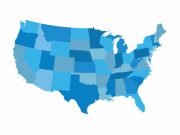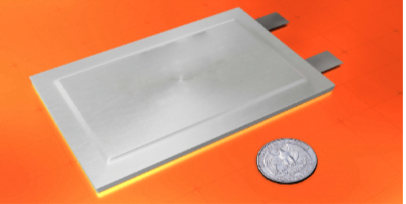After a solid start to the week, stocks took a sharp turn on Thursday, triggering a steep descent that carried into Friday, leaving the major indices lower for the week. On Friday, U.S. equity markets had their steepest single-day decline since 2020 as investors processed comments made by Fed Chairman Jerome Powell pointing to more aggressive interest rate hikes at its May meeting and beyond. The Dow and the S&P 500 shed 2.8% Friday, while the Nasdaq fell 2.6%. The Dow lost 1.9% for the week, fell 2.8%, and the Nasdaq declined 3.8%.
The upcoming week will be a busy one on the earnings front with dozens of prominent companies scheduled to report, including all five components of the popularized FAAMG acronym – Meta Platforms, Apple, Amazon, Microsoft, and Google. With the earnings season now about 20% completed, 79% of the companies that had reported had beaten analysts expectations, according to FactSet.
We’ll also get updates on the U.S. housing market. The Case-Shiller National Home Price Index for February and March new home sales are due on Tuesday, with pending home sales following on Wednesday.
Our team has its eyes on three tickers this week, including a name from a defensive sector that seems to have plenty of runway ahead and a rate-sensitive stock that could pop off ahead of earnings on Tuesday.
While bank stocks had factored in rate hike benefits to a certain extent, more rate hikes than projected also means potential for banks to generate higher revenue in 2022. Today we’ll discuss one of the most rate-sensitive names in banking. As one of the perennially most rate-sensitive banks out there, Comerica (CMA) is one to watch as the market adapts to a more hawkish Fed.
Until recently, Comerica’s management had only expected four 25 basis point rate hikes this year. According to its annual filing, a 1% move higher in the federal funds rate would lead to a whopping 12% increase in net income interest over the next twelve months. Considering the implications, the upside potential is undeniable.
Furthermore, Comerica has high cash levels right now, which will earn a lot more yield as rates go up. With roughly 90% of total loans in various commercial segments, many of its loans also have floating rates that will reprice higher with the federal funds rate.
With a forward 12-month P/E of 15, CMA is still attractively priced. Plus, the conservative 33% payout ratio means the 3% dividend yield isn’t going anywhere anytime soon.
Baird analyst David George upgraded Comerica (CMA) to Neutral from Underperform with a price target of $85. Following the significant underperformance of the shares and a “generally more constructive” pre-provision net revenue outlook for regional banks, the “aggressive short case for regionals is getting tougher to make given current valuations,” George told investors in a research note.
Traditionally one of the most stable and recession-resistant sectors, everyone needs healthcare at some point regardless of income status. A name offering defensive growth from the desirable sector currently is UnitedHealth Group (UNH). As the largest health insurance company by market cap and market share, UNH’s size gives it built-in advantages over peers in the group.
Despite the market slowdown this year, UNH’s share price is up more than 6%, outperforming its peers and the broader market. The Health Care Select Sector SPDR Fund (XLV) is down nearly 1% YTD, while the S&P 500 has shed more than 8%.
UnitedHealth reported double-digit revenue growth for 2021. Full-year revenue was listed at $287.6 billion, up 11.8% year over year. Full-year EPS increased from $16.03 in 2020 to $18.08. The company expects annual 2022 revenue of between $317 and $320 billion, the median of which implies an 11% upside year over year. UNH forecasts 2022 EPS of $20.20 to $20.50.
Momentum should be supported in the coming years thanks to UNH’s strong market position and attractive core business. Its expansion of international business provides substantial diversification benefits and shields against the impact of tightening U.S. regulations while allowing the Dow giant to tap into the $8.3 trillion spent annually on global healthcare.
UnitedHealth has a solid history of rewarding investors with a steady paycheck. The company went to a quarterly dividend in 2010 and, since then, has increased its dividend every year. That includes a 16% bump last year to $1.45 a share, which works out to a yield of 1.10% at its current price. UNH’s payout has increased 31% over the past five years, and the stock has a 5-year annualized dividend growth rate of 17.18%. The stock looks like a value at about 28 times earnings, compared to the healthcare industry, where the average P/E is around 37.
Mostly everyone is familiar with 3M (MMM). Widely known for its adhesive tape, the industrial conglomerate has a portfolio of over 60,000 products that consumers use every day in hospitals, schools, offices, and homes worldwide.
3M share price has moved considerably over the past year, gyrating from a 52-week high of $208.95 to its 52-week low of $139.74. Thanks to a somber sales forecast and some legal liabilities relating to past manufacturing practices, the stock is trading at just 14 times forward earnings, which is an overreaction according to Morningstar’s Joshua Aguilar, who pegs MMM’s fair value at $192 per share, offering considerable upside from the current price. The pros on Wall Street say to Hold MMM and give it a median price target of $165, representing a — upside. The dividend aristocrat has a decades-long record of upping its payout, which is currently 4%.









